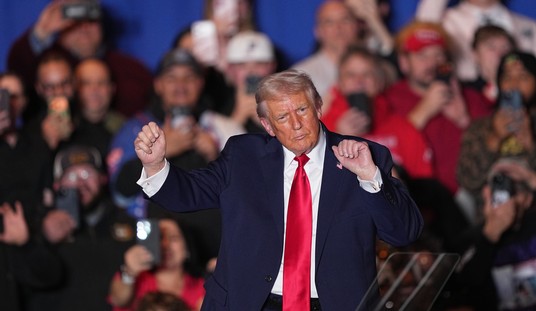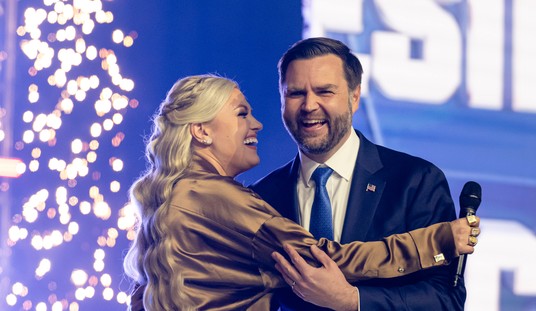The Washington Post, May 23, 2011:
On March 30, the 30th anniversary of the assassination attempt on President Ronald Reagan, Jim Brady, who sustained a debilitating head wound in the attack, and his wife, Sarah, came to Capitol Hill to push for a ban on the controversial “large magazines.” Brady, for whom the law requiring background checks on handgun purchasers is named, then met with White House press secretary Jay Carney. During the meeting, President Obama dropped in and, according to Sarah Brady, brought up the issue of gun control: “to fill us in that it was very much on his agenda,” she said.
“I just want you to know that we are working on it,” Brady recalled the president telling them. “We have to go through a few processes, but under the radar.”
In every practical respect, the firearms-related provisions of the “assault weapons ban” were an objective failure. But absurd restrictions on firearms weren’t the only part of that legislation that passed only to succumb to an outcome quite different than it’s anti-gun progenitors had in mind.
Along with creating the term “assault weapon,” this Clinton-era law also created the similarly arbitrary term “high-capacity magazine.”
A detachable magazine is a container that holds cartridges for a given firearm, and the number of cartridges typically varied with the size and the purpose of the weapon at hand and the size of the cartridge it fired. Small turn-of-the-century handguns typically carried magazines of just 6-7 cartridges. The standard magazine capacity of many pistols that became popular in the 1980s was 15 rounds or more. The standard capacity of military grade rifles and carbines was 20-30 rounds. As time progressed, firearm designers were finding ways to put a larger number of cartridges in the magazines of their weapons.
When legislators decided that the “assault weapons ban” should also include a restriction on the number of cartridges that any given magazine could hold, they declared that any magazine that held a greater amount of cartridges was a “high capacity” magazine. It didn’t matter to them that many of the firearms in question had as their standard capacity magazines with round counts from 13-30 rounds or more, or that some of these firearms had had such a capacity since before the congressmen and congresswomen writing the law were born.
Congress arbitrarily decided that 10 rounds was “enough” for American citizens, and included provisions that once the law went into effect, any magazine manufactured after the date the law went into effect that had more than ten rounds would be illegal for anything other than law enforcement use.
Like the firearms provisions of the bill, these magazine provisions also had unintended consequences.
As it turns out, firearms magazines are both typically very robust and reliable in design, and incredibly easy to mass manufacture. Once made, they last indefinitely.
Between the time Congress started signaling that they would create a magazine capacity restriction and the implementation of the law, factories worked 24 hours a day, 7 days a week churning out millions of nothing but high-capacity magazines, which were stockpiled by manufacturers, distributors, wholesalers, and retailers in massive warehouses.
As a result, “high capacity magazines” for most common firearms were freely available throughout the life of the ban. As e-commerce came into early maturity during this time period, many high-capacity magazines were more available than they had been before the ban was signed into law.
How?
Congress had neglected to make the possession or sale of high-capacity magazines illegal, and only outlawed the manufacture of new magazines.
The law had another unforeseen result. As companies looked to introduce new models of pistols, they determined that if they were going to be forced to make pistols limited to a magazine capacity of just 10 rounds, it would be advantageous for them to make these new pistols as small as possible for the concealed carry market. The Glock 26 and Kahr K9 were introduced the following year, and were among the first of a new breed of powerful, ultra-concealable handguns known as “subcompacts.” Similar designs from other companies quickly followed.
Objectively, based purely on the numbers, the assault weapons ban increased both the number of and public acceptance of semi-automatic, military-style rifles, and created a new class of powerful, concealable handguns.
Put another way, the assault weapons ban not only put more guns into the market, it encouraged the development of smaller, more powerful, semi-automatic firearms.
Why, then, would the Obama administration want to reintroduce the ban?
Rest assured, if the administration could find broad support for a reinstatement of the expired ban, it would do everything in its power to fix the mistakes of the past.
Instead of banning a list of guns by name or arbitrary cosmetic features or banning just the manufacture of magazines, they would attempt to model their ban on some of the more restrictive state bans, such as those in California, Maryland, and New York, which would no doubt result in more unintended (and sometimes unbearably cute) consequences.
Attempting to impose such a restrictive and prohibitionist law is far harder today in a nation where judicial interpretations favoring individual gun rights are ascendant. It would take a dramatic and drastic turn of events to undermine the growing gun rights movement and to generate the sort of popular support for more national gun control laws.
Such firearms would have to be used, repeatedly and with great affect, to generate massive levels of violence and the media furor needed to revive a flagging gun control movement. It would almost take a massive covert operation delivering thousands of weapons to violent felons to make this even potentially viable.
Luckily, we all know that can’t happen here.
Read Part One of this series here.









Join the conversation as a VIP Member